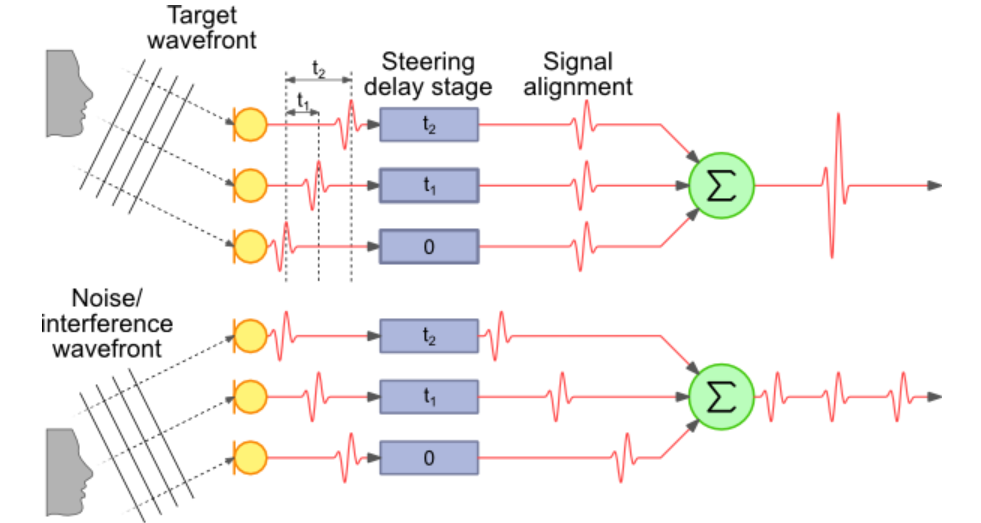

What is AOA ranging?
Angle-of-Arrival (AOA): The positioning algorithm based on the angle of arrival of the signal is a typical, ranging-based positioning algorithm. In the application of wireless sensor networks, AOA (Angle-of-Arrival: AOA) is used as a network node. Self-positioning is a common positioning algorithm, and its main features are: low cost and high positioning accuracy. It mainly detects the arrival direction of the transmitted signal through some application firmware, and then uses triangulation or other angles to calculate the position of the unknown node in the transmitted signal according to the staggered angle between the receiving node and the originating node. It is widely used in the wireless application market.
About the basic principle of AOA algorithm
In the process of wireless signal transmission, for the antenna array signals of different angles and ranges formed by the signal propagation direction in the signal transmission, the signals received by different antennas will have a received signal time difference, and this time difference can be used to correspond to different The angle of arrival of the signal, which is the basic principle of AOA-based positioning algorithm based on the angle of arrival of the signal, you can refer to the following figure.
According to the idea of the time difference formed by different signal arrival angles, from the perspective of signal transmission, the core theory of the AOA algorithm is to calculate the time difference received by different antennas. That is, when the bluetooth chip opens the carrier amplitude and phase sending and receiving values of the bluetooth RF end, according to different antenna array designs, the I/Q (phase value) value is used to calculate the signal arrival angle and azimuth, and then through two receiving ends in different directions, you can Determine the exact position of the transmitter (the error is about 5cm, which is currently the most accurate data on the market).
Common time difference calculation methods
There are two methods for calculating the time difference of arrival of signals on different antennas:
①When a signal is received, the signal delay calculation method is used to determine it, and then the angle of arrival is calculated based on the current propagation rate of the signal and the geometric distribution of the array.
②Beamforming——Beamforming technology, which will strengthen and amplify the signals from different directions, and then determine the angle of arrival according to the information strength in different directions.
Specific algorithm for positioning according to the angle of arrival
Under the condition that the position of the base station is known, the signal sent by the base station reaches two nodes that have been positioned: the angle α1 between the connection between the base station 1 and the device and the reference direction, and a ray L1 is drawn based on this direction; the same base station 2 to the angle α2 between the connection line between the device and the reference direction, and draw a ray L2 based on this direction. Then the intersection of ray L1 and ray L2 is the angular position of arrival of the device.
The coordinates of the base station BS1 are marked as (x1, y1), the coordinates of BS2 are marked as (x2, y2), and the coordinates of the measured node are (x, y).
Assuming that both α1 and α2 are not 90°, the straight line equations of the two rays are y−y1=k1(x−x1), y−y2=k2(x−x2), where k1=tan(α1), k2= tan(α2)
Assuming that the coordinates of the base station BS1 are (0,0), the coordinates of BS2 are (1,0), α1=30°, α2=120°, the code to find the node to be located is as follows:
x1=0;y1=0;x2=1;
y2=0;α1=30;
α2=120;k1=tan(α1/180pi);k2=tan(α2/180pi);
x=(k1x1-k2x2-y1+y2)/(k1-k2)
y=(k1k2(x1-x2)-k2y1+k1y2)/(k1-k2)
The result is
x = 0.750, y = 0.433
(x, y)=(0.75, 0.433) is the position determined as the node.
If α1 or α2 is 90°, the two-ray equation is x=x1 or x=x2, and the measured node position can be obtained immediately by linking with another ray.
Technical application scenarios
As one of the main technologies of indoor positioning, AOA can provide accurate positioning information to object tags, and can also be used to track the trajectory of personnel activities and control indoor fixed assets. The current main application scenarios are:
①Smart City - Supermarkets and shopping malls: Positioning services in shopping malls and products in shopping malls can be fixed with labels to avoid the situation of not paying for picking up goods.
②Industrial intelligence-factory: It can locate workers and prioritize/authorize work areas. In addition, industrial robots can also be positioned, routed and controlled, and so on.
- [Application] Intelligent forest fire prevention system based on LoRa technology to protect nature from harm!
- Typical applications of wireless modules in the field of Internet of Things
- Application of Bluetooth Beacon in Warehouse Management
- Bluetooth BLE module as one of the mainstream way of wireless communication







